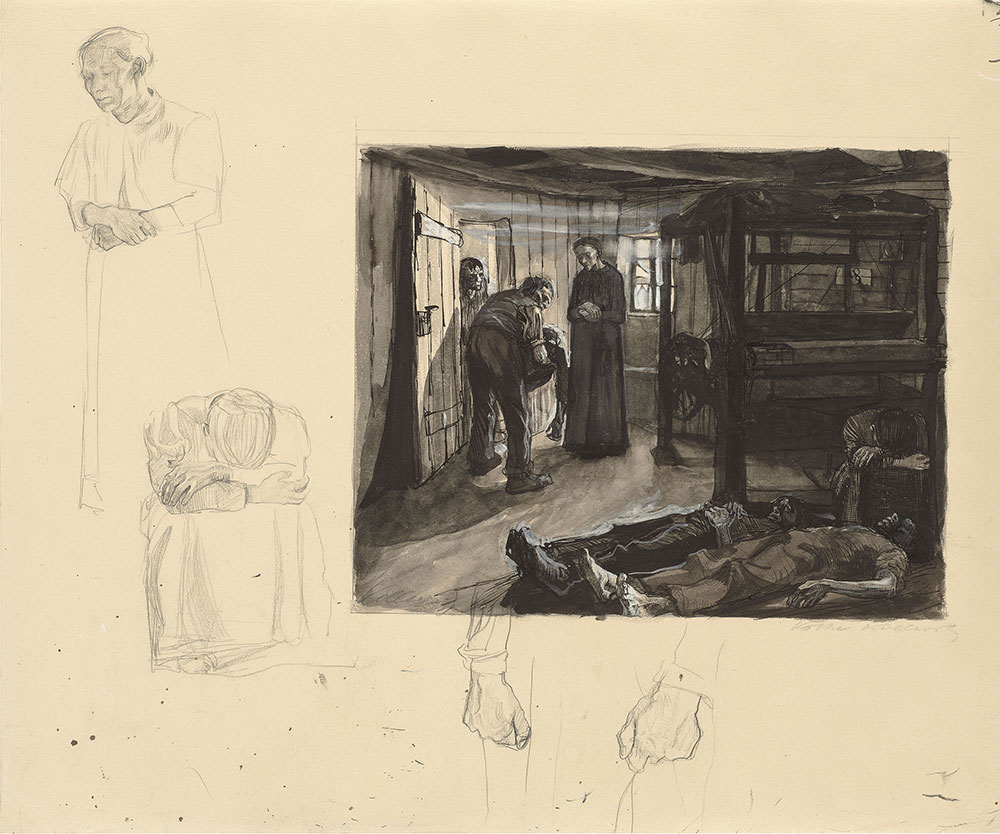
In 1844, several thousand weavers in the central European region of Silesia revolted against exploitative working conditions and decreasing wages. Kollwitz’s Weavers’ Revolt, a series of six prints completed in 1897, draws on these historic events but places them in a contemporary context. A preparatory study for the final image in the series, this drawing depicts the tragic consequences of the unrest. At left, men carry a corpse into a dark parlor, to be laid down next to the two dead bodies already there; a woman sits beside them, grieving. Although the revolt itself is left out of the image, the white gunpowder haze, which drifts into the interior space through the broken window, suggests that the fighting is ongoing.
Käthe Kollwitz
German, 1867–1945
The End, 1897
Graphite pencil, brush and pen and black and brown ink, heightened with white
Kupferstich-Kabinett, Staatliche Kunstsammlungen Dresden, INV. NO. C 1918-21
© Kupferstich-Kabinett, Staatliche Kunstsammlungen Dresden © 2021 Artists Rights Society (ARS), New York
Photo: Herbert Boswank
